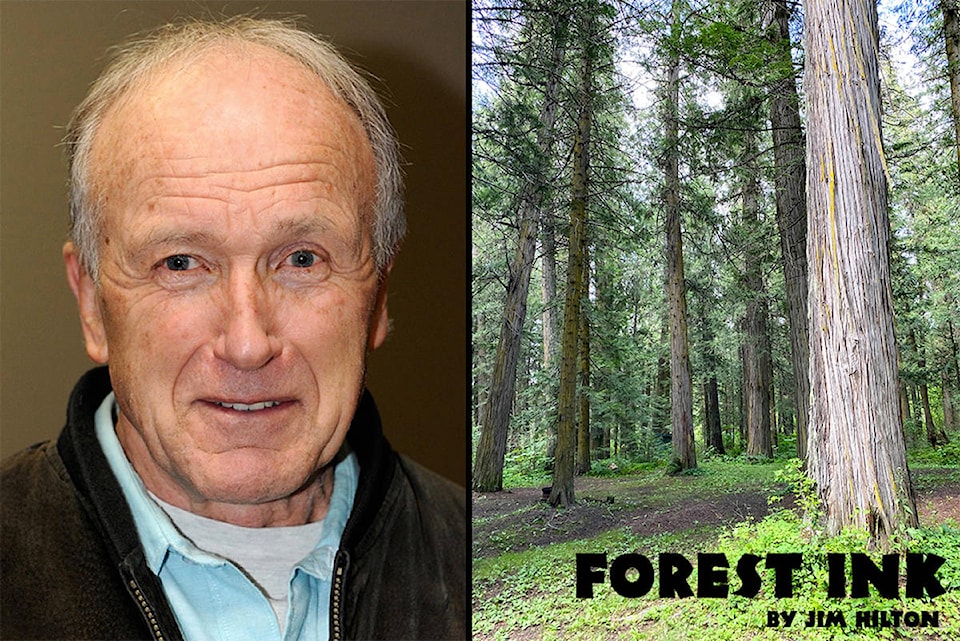In January of this year I introduced the topic of using branch wood chips and have received feedback from some readers about their experiences and what are some potential sources of wood chips.
With about five hectares of Douglas fir forest and a variety of introduced deciduous trees and shrubs I have been experimenting with the production and use of a variety chipping machines and chip sources.
I have owned a gas powered five horse chipper for over a decade but have not done much with it since my portable sawmill was providing lots of saw dust.
Trying to get this chipper working properly could cover a couple of articles but I will spare readers my frustrations associated with using this particular internal combustion engine.
While the chipper worked well on branches up to two inches the ongoing problems with the gas motor encouraged me to purchase an electric version.
READ MORE: FORESTRY INK COLUMN: The benefits of branch wood chips
For around $150 this version does a good job of branches up to one inch in diameter with long straight material processing the best. Short twisted branchy material was difficult to feed and often plugs up the 15 amp electric machine.
I was able to take the larger more difficult material to a friend’s place who recently purchased self feed chipper mounted on a small tractor which does a much better job although the chips are more coarse.
As you would expect these machines are pricey and unless you have a large property and are planning on a lot of work it is difficult to justify the expenditure.
There is a chipper that will fit on my 20hp, three-point-hitch tractor that is around $3,500, which claims it can process branches up to three inches. This purchase is on hold until I see how my plants respond to the addition of the chips and what is the potential for marketing the material.
If your not convinced about the benefits of adding organic matter to your soil, I recommend the 1992 Rodale Book of Composting which covers a wide variety of source materials and how to process them for gardens and orchards.
As mentioned in this book, most small properties could get by with a small electric chipper and move up to a larger variety by sharing the cost with friends and neighbours if the amount of material justifies the cost. I see a number of people are taking their tree and shrub trimmings to the recycling depot where they are apparently processed for the power plant.
I have attempted to contact the CRD about some options for public access to this material but have not had much success with this option so far. One source of wood chips (coarse saw dust) was from a variety of old mill sites around the city but most of those have now been used up but a recent pile of chips on the community forest is available if and when the roads are passable.
It is important to understand the difference between fresh branch wood chips and the large more coarse material produced from dry material which has very different properties and methods of application.
There is lots of information on line about the benefits of adding the woody material if you understand the principals of organic matter breakdown and soil improvements.
Jim Hilton is a professional agrologist and forester who has lived and worked in the Cariboo Chilcotin for the past 40 years. Now retired, Hilton still volunteers his skills with local community forests organizations.
READ MORE: Quesnel pulp manufacturer gets fibre funding boost
Like us on Facebook and follow us on Twitter.
